Agent Staffing View
Overview
This Agent Insights View will help you understand how you're staffing agents in a given time period; is your agent's workload too low, too high, or appropriate given the volume of conversations you have in a given time period?
If you want a general walkthrough and overview of how to use Agent Insights, you can read the full guide here.
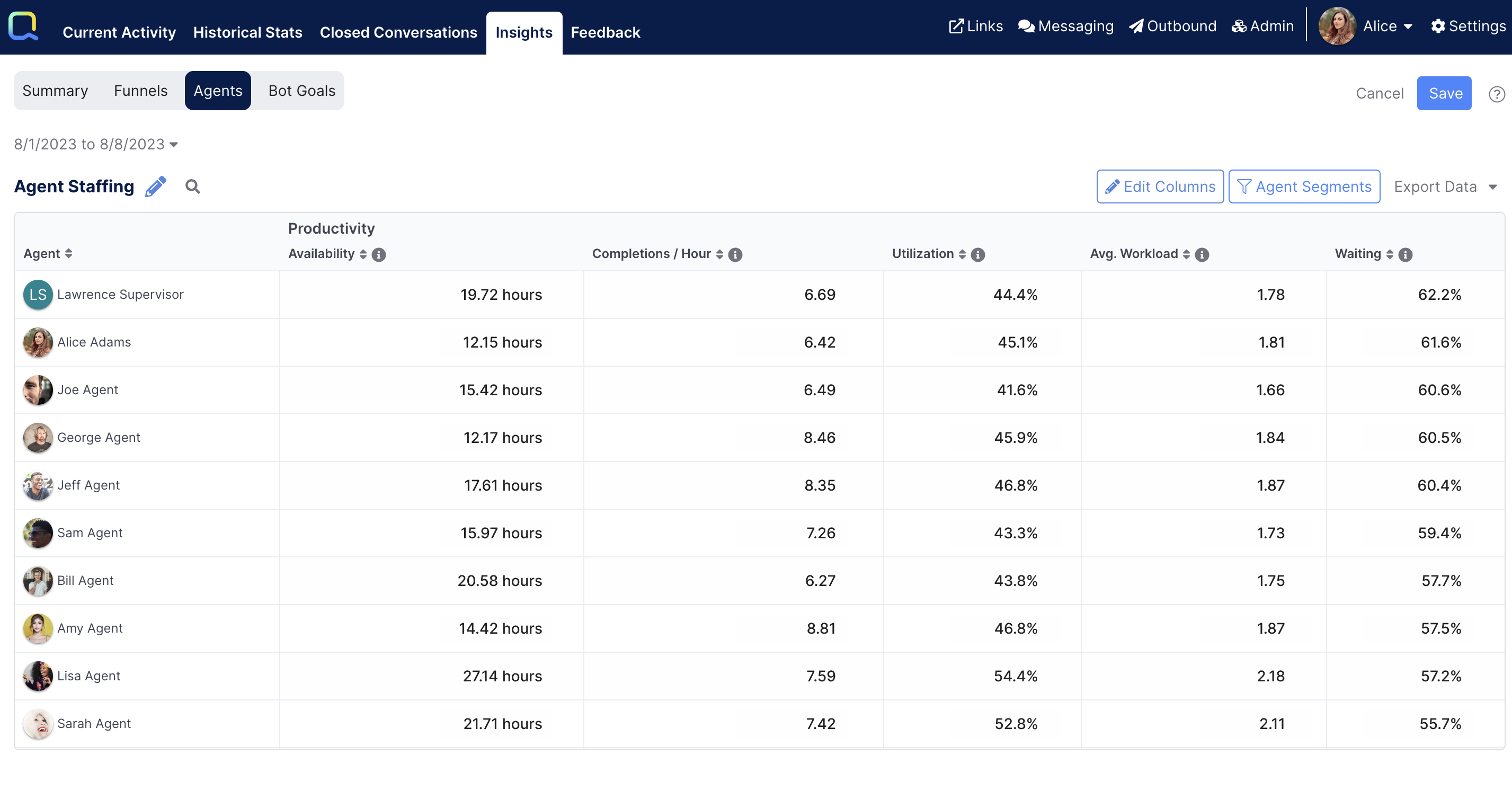
Creating your View
Editing Columns
First, navigate to Insights, then select Agents, from there click the New View button, then click Edit Columns.
You'll want to select the following 5 metrics under Productivity (everything else should be unchecked): Availability, Completions / Hour, Utilization, Avg. Workload, & Waiting:
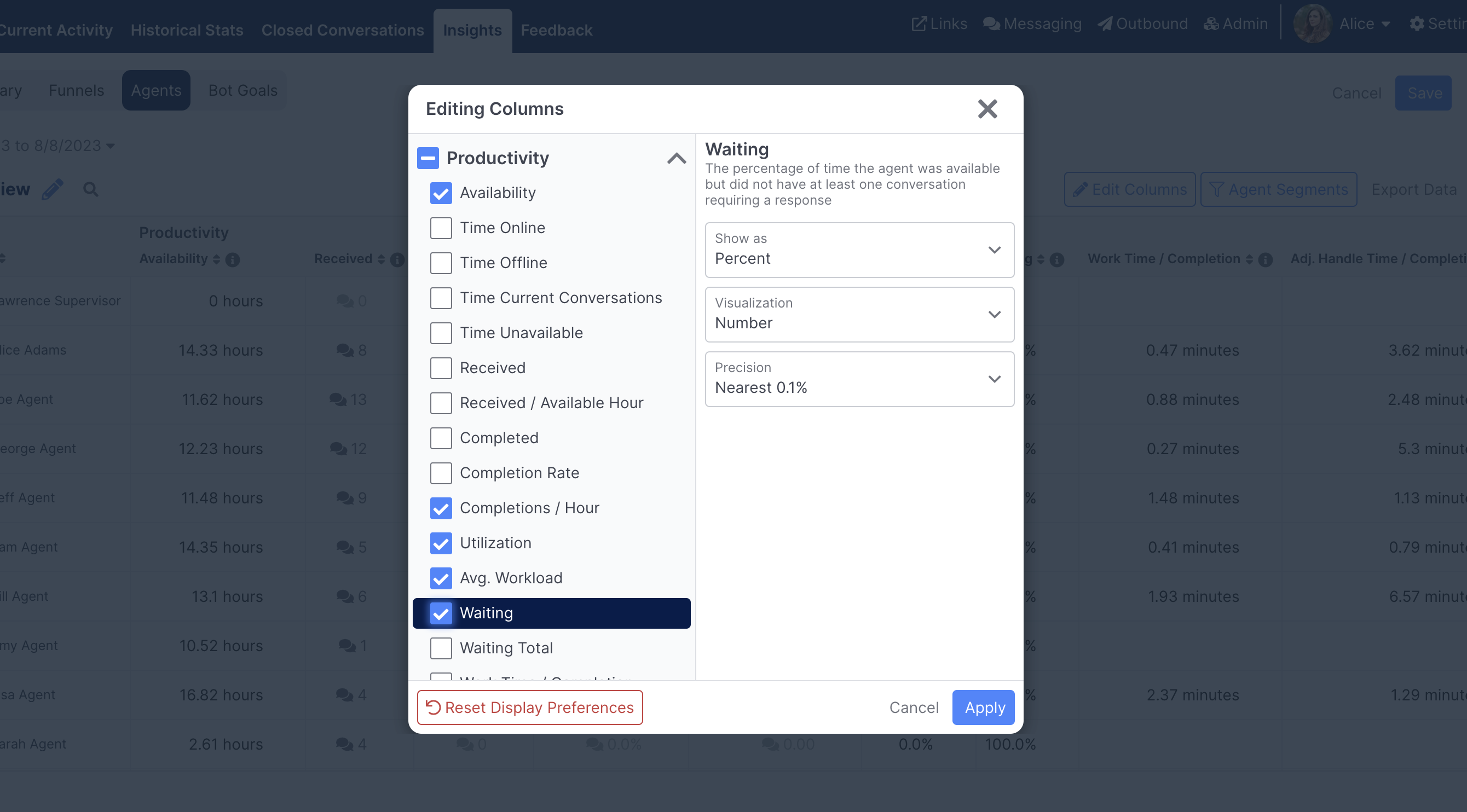
Then click Apply:
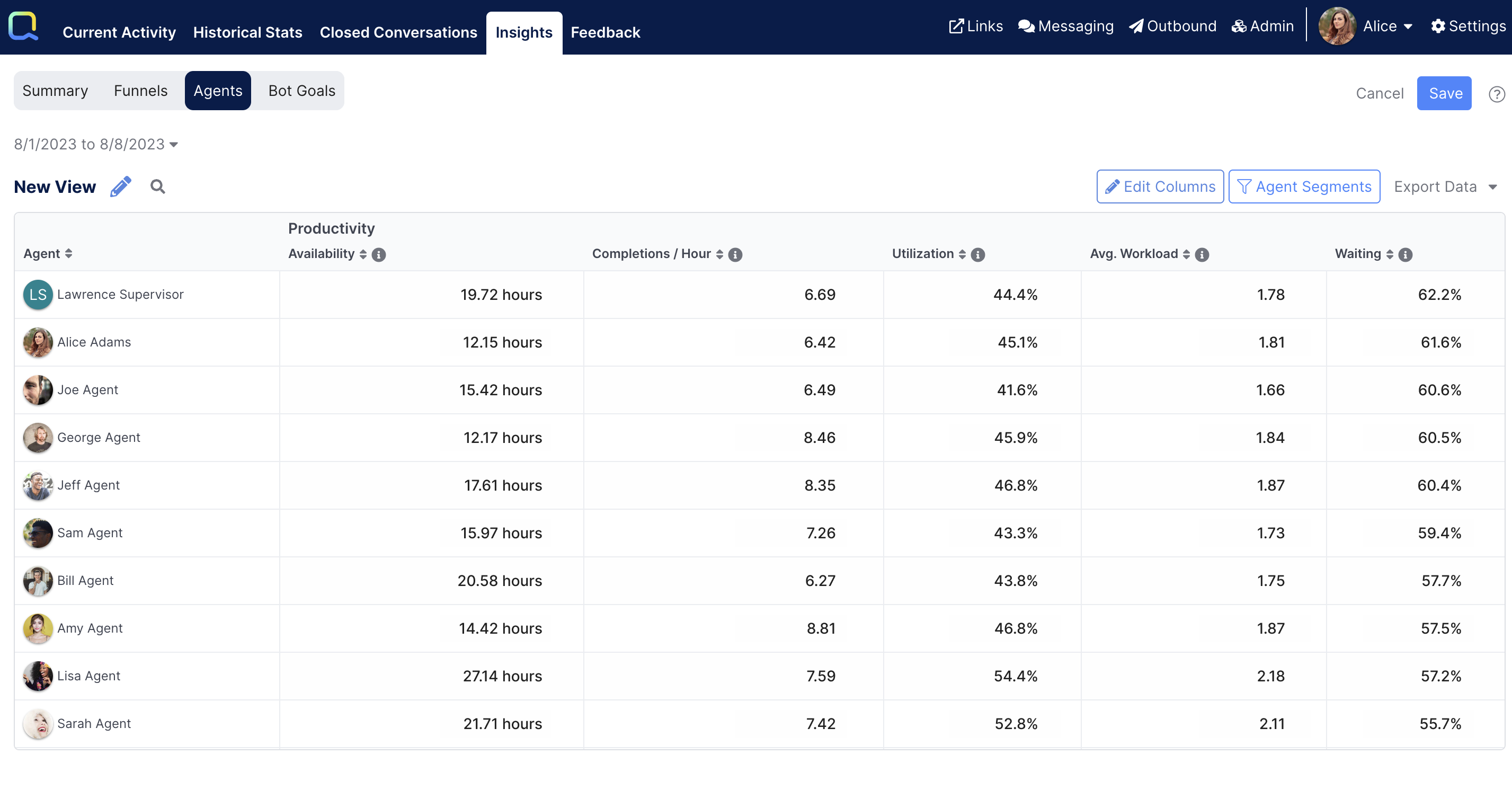
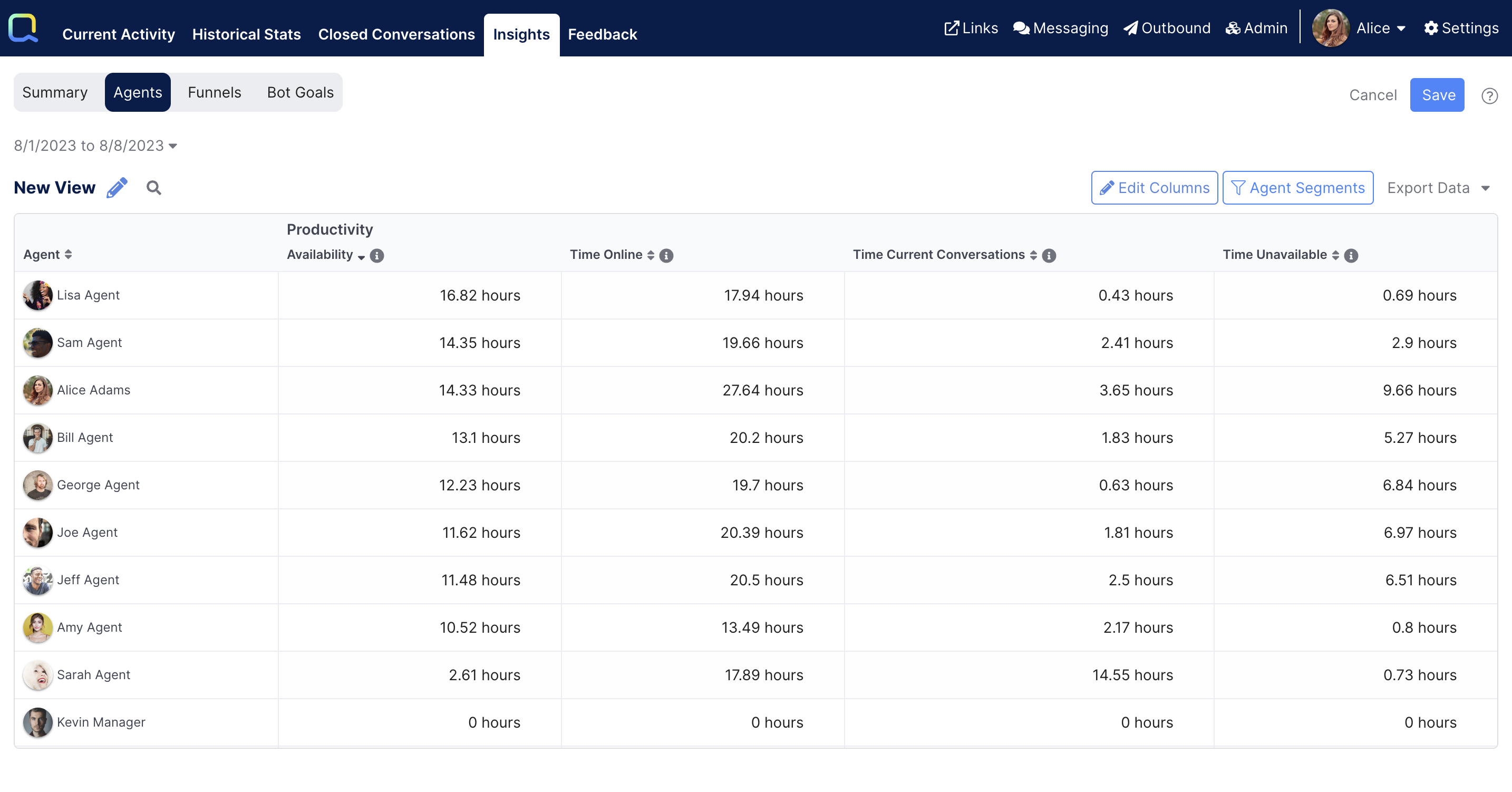
General Settings
Next, click the Pencil icon next to New View, from here you can rename your view and select who in your organization you want to have access to this View:

Agent Segments
By default, your View is going to include all agents in your Quiq site. If you'd like to filter this View to only include specific agents, or group the report by different agent segments, you can use the Agent Segments button and select existing agent segments to apply, or a create a new one:
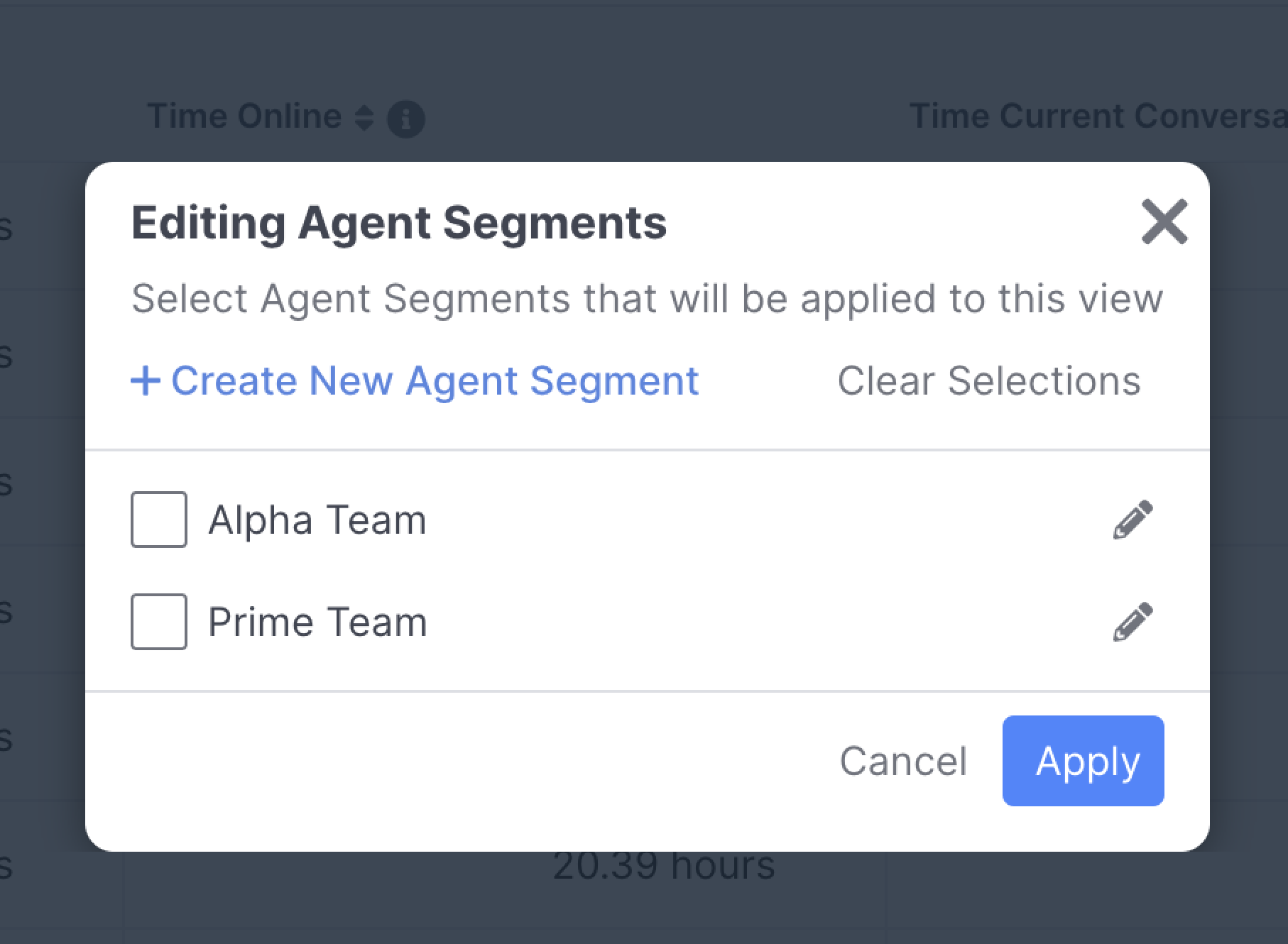
Once you're happy with your columns, segments, and general settings click the Save button to save your report.
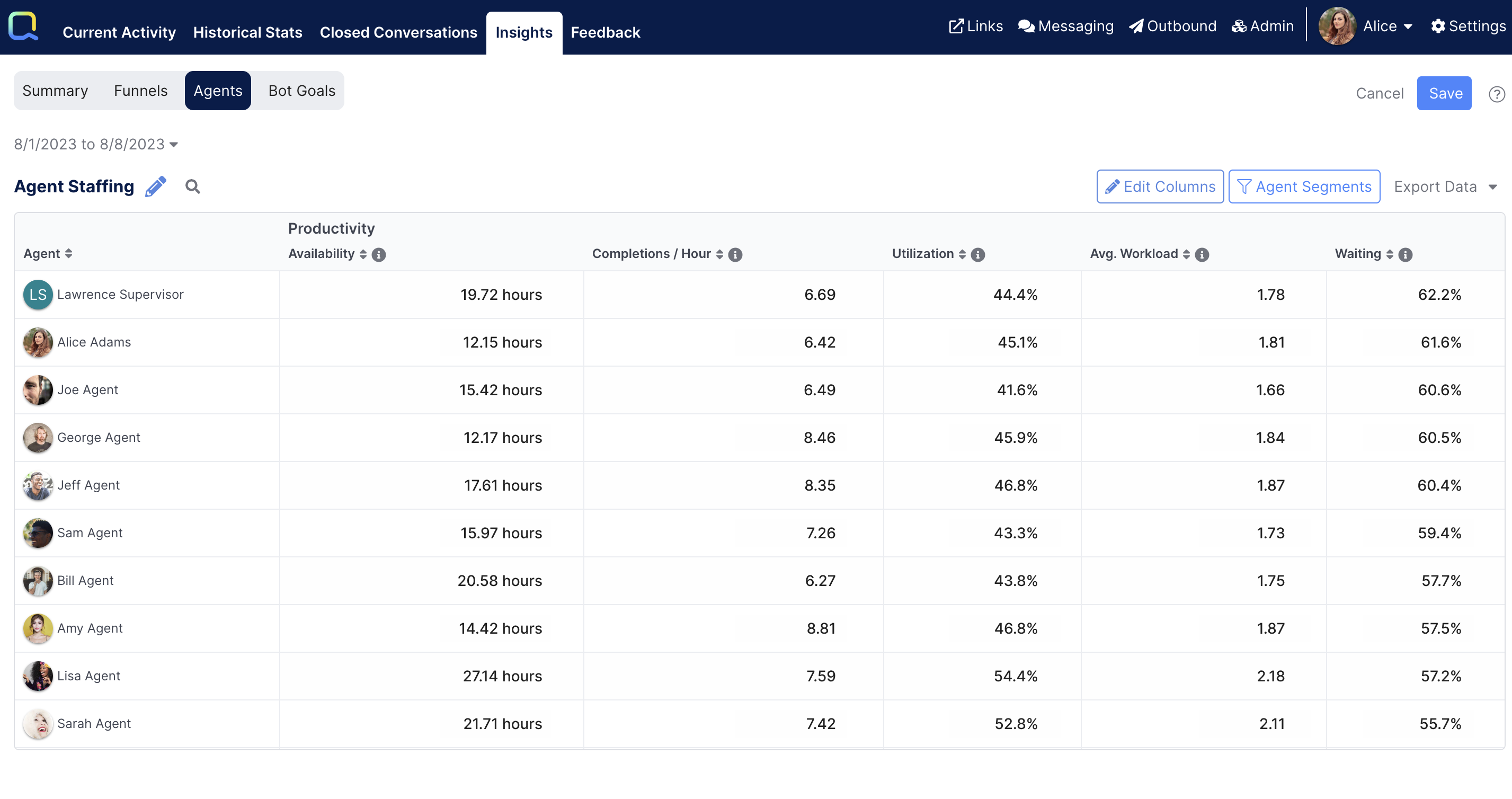
Using your Agent Staffing View
Once you've saved your View, you can sort on the Waiting column to see how often your agents are spending their time waiting for a response from the customer.
In this demo example, we can see that agents are spending a lot of their time waiting, and that their utilization is low:
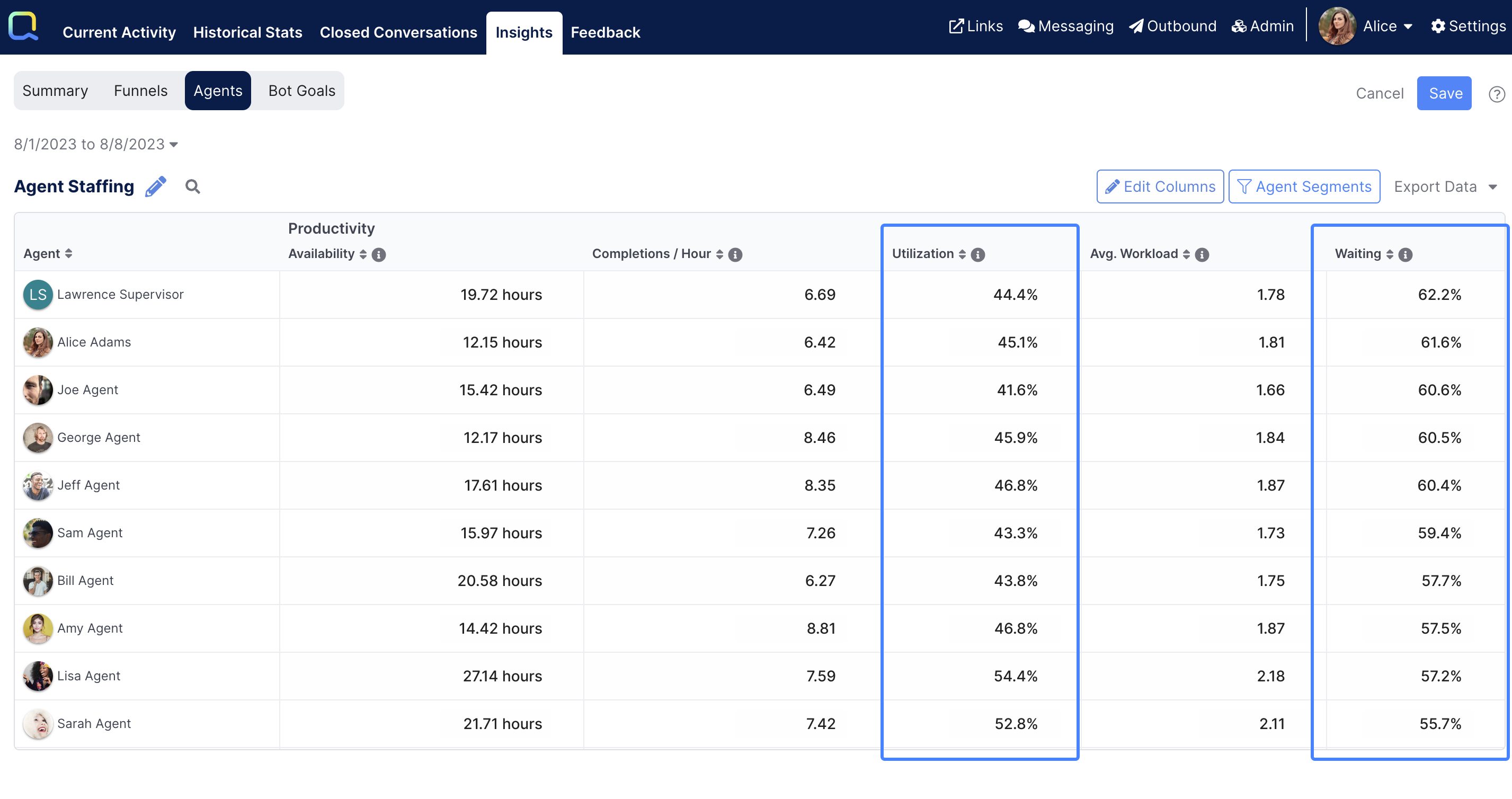 Most of your agents are spending around 60% of their available time waiting for a customer to respond - high waiting time, coupled with a low utilization, lets us know that we're overstaffed for this period.
Most of your agents are spending around 60% of their available time waiting for a customer to respond - high waiting time, coupled with a low utilization, lets us know that we're overstaffed for this period.
If we saw a high waiting percentage, but a high utilization percentage, we could consider increasing our soft assignment limit, so that agents could field additional conversations while waiting on customers to respond.
Here's a shorthand for potential actions you can take depending on what your Agent Staffing View looks like:
| Symptom | Agent Change | Configuration Update |
|---|---|---|
| high waiting, low utilization | staff less agents | update schedules |
| high waiting, high utilization | train agents to mark conversations inactive | decrease inactivity timer and/or increase soft assignment limit |
| low waiting, high utilization | focus on efficiency |
Updated about 2 months ago
